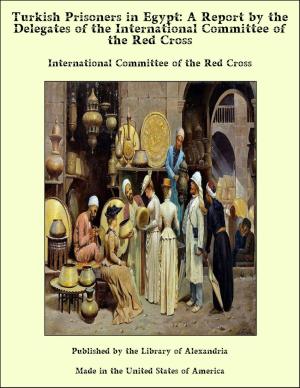Babylonian Talmud: Part X
Nonfiction, Religion & Spirituality, New Age, History, Fiction & Literature| Author: | Michael L. Rodkinson | ISBN: | 9781465579720 |
| Publisher: | Library of Alexandria | Publication: | March 8, 2015 |
| Imprint: | Language: | English |
| Author: | Michael L. Rodkinson |
| ISBN: | 9781465579720 |
| Publisher: | Library of Alexandria |
| Publication: | March 8, 2015 |
| Imprint: | |
| Language: | English |
TO HIM WHO IS A LIBERAL DONOR TO ALL PHILANTHROPIC INSTITUTIONS A FRIEND OF ISRAEL'S PUREST IDEALS, LITERATURE AND RELIGION ADOLPH LEWISOHN, ESQ. THIS BOOK IS MOST RESPECTFULLY DEDICATED BY THE AUTHOR MICHAEL L. RODKINSON NEW YORK, IN MONTH ELUL, SEPTEMBER 1ST. 1903 PREFACE. THE ancient authors used to begin the prefaces to their works with the proverb "Sepher be Lo Hakdamha kegnph be Lo nechamaha," which means "A book without a preface is similar to a body without a soul"; and, indeed, this proverb remains forever true. At the time we began our translation of the Talmud, we were aware that to the study of it a clear preface which should explain its nature and the character of the sages mentioned in it was necessary, as without it there would be great difficulty for students in catching the real meaning, and in some places the reader would be confused, not being aware of its history and of the names mentioned--who these were and when they existed. With this in mind, we had already prepared the present work in 1897, when only a few volumes of our translation had been issued. Although we gave a brief general introduction to the first volume of the translation, and also some prefaces and introductions in the succeeding volumes, they do not suffice for the student who desires to have a clear idea of all that he is studying.
TO HIM WHO IS A LIBERAL DONOR TO ALL PHILANTHROPIC INSTITUTIONS A FRIEND OF ISRAEL'S PUREST IDEALS, LITERATURE AND RELIGION ADOLPH LEWISOHN, ESQ. THIS BOOK IS MOST RESPECTFULLY DEDICATED BY THE AUTHOR MICHAEL L. RODKINSON NEW YORK, IN MONTH ELUL, SEPTEMBER 1ST. 1903 PREFACE. THE ancient authors used to begin the prefaces to their works with the proverb "Sepher be Lo Hakdamha kegnph be Lo nechamaha," which means "A book without a preface is similar to a body without a soul"; and, indeed, this proverb remains forever true. At the time we began our translation of the Talmud, we were aware that to the study of it a clear preface which should explain its nature and the character of the sages mentioned in it was necessary, as without it there would be great difficulty for students in catching the real meaning, and in some places the reader would be confused, not being aware of its history and of the names mentioned--who these were and when they existed. With this in mind, we had already prepared the present work in 1897, when only a few volumes of our translation had been issued. Although we gave a brief general introduction to the first volume of the translation, and also some prefaces and introductions in the succeeding volumes, they do not suffice for the student who desires to have a clear idea of all that he is studying.















